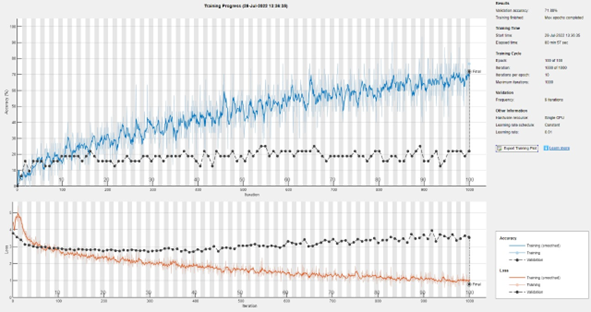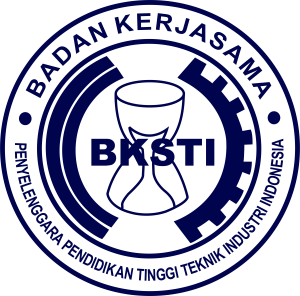Graphology analysis for detecting hexaco personality and character through handwriting images by using convolutional neural networks and particle swarm optimization methods
DOI:
https://doi.org/10.12928/ijio.v3i2.6242Keywords:
Convolutional Neural Network, Particle Swarm Optimization, Handwriting, Personality and Character, Machine Learning ClassificationAbstract
Graphology or handwriting analysis can be used to infer the traits of the writers by examining each stroke, space, pressure, and pattern of the handwriting. In this study, we infer a six-dimensional model of human personality (HEXACO) using a Convolutional Neural Network supported by Particle Swarm Optimization. These personalities include Honesty-Humility, Emotionality, eXtraversion, Agreeableness (versus Anger), Conscientiousness, and Openness to Experience. A digital handwriting sample data of 293 different individuals associated with 36 types of personalities were collected and derived from the HEXACO space. A convolutional neural network model called GraphoNet is built and optimized using Particle Swarm Optimization (PSO). The PSO is used to optimize epoch, minibatch, and droupout parameters on the GraphoNet. Although predicting 32 personalities is quite challenging, the GraphoNet predicts personalities with 71.88% accuracy using epoch 100, minibatch 30 and dropout 52% while standard AlexNet only achieves 25%. Moreover, GraphoNet can work with lower resolution (32 x 32 pixels) compared to standard AlexNet (227 x 227 pixels).
References
F. Rizvi and M. S. H. Khiyal, “Personality prediction through offline handwriting analysis,” J. Multidiscip. Eng. Sci. Stud., vol. 3, no. 1, pp. 1282–1288, 2017.
K. Chaudhari and A. Thakkar, “Survey on handwriting-based personality trait identification,” Expert Syst. Appl., vol. 124, pp. 282–308, 2019.
N. Punetha, A. K. Pal, and V. Sharma, “Behavior Prediction of Human by Signature and Handwriting Analysis Using Matlab,” 2020.
M. Gavrilescu and N. Vizireanu, “Predicting the Big Five personality traits from handwriting,” EURASIP J. Image Video Process., vol. 2018, no. 1, pp. 1–17, 2018.
A. R. Pathak, A. Raut, S. Pawar, M. Nangare, H. S. Abbott, and P. Chandak, “Personality analysis through handwriting recognition,” J. Discret. Math. Sci. Cryptogr., vol. 23, no. 1, pp. 19–33, 2020.
A. U. Rahman, “Towards Development of Computational Methods for Handwriting Analysis with Focus on Writer Identification, Personality Prediction, and Emotion Detection,” Ghulam Ishaq Khan Institute of Engineering Sciences and Technology, 2022.
M. S. Anari, K. Rezaee, and A. Ahmadi, “TraitLWNet: a novel predictor of personality trait by analyzing Persian handwriting based on lightweight deep convolutional neural network,” Multimed. Tools Appl., vol. 81, no. 8, pp. 10673–10693, 2022.
J. E. Valdez-Rodr’iguez, H. Calvo, and E. M. Felipe-Riveron, “Handwritten Texts for personality identification using convolutional neural networks,” in International Conference on Pattern Recognition, 2018, pp. 140–145.
S. H. Fatimah, E. C. Djamal, R. Ilyas, and F. Renaldi, “Personality features identification from handwriting using convolutional neural networks,” in 2019 4th International Conference on Information Technology, Information Systems and Electrical Engineering (ICITISEE), 2019, pp. 119–124.
N. Lemos, K. Shah, R. Rade, and D. Shah, “Personality prediction based on handwriting using machine learning,” in 2018 International Conference on Computational Techniques, Electronics and Mechanical Systems (CTEMS), 2018, pp. 110–113.
A. Chitlangia and G. Malathi, “Handwriting analysis based on histogram of oriented gradient for predicting personality traits using SVM,” Procedia Comput. Sci., vol. 165, pp. 384–390, 2019.
A. A. Elngar, N. Jain, D. Sharma, H. Negi, A. Trehan, and A. Srivastava, “A deep learning based analysis of the big five personality traits from handwriting samples using image processing,” J. Inf. Technol. Manag., vol. 12, no. Special Issue: Deep Learning for Visual Information Analytics and Management., pp. 3–35, 2020.
S. Ghosh, P. Shivakumara, P. Roy, U. Pal, and T. Lu, “Graphology based handwritten character analysis for human behaviour identification,” CAAI Trans. Intell. Technol., vol. 5, no. 1, pp. 55–65, 2020.
S. Thomas, M. Goel, and D. Agrawal, “A framework for analyzing financial behavior using machine learning classification of personality through handwriting analysis,” J. Behav. Exp. Financ., vol. 26, p. 100315, 2020.
W. Ilmini and T. G. I. Fernando, “Computational personality traits assessment: A review,” in 2017 IEEE International Conference on Industrial and Information Systems (ICIIS), 2017, pp. 1–6.
R. K. Samsuryadi and F. S. Mohamad, “Automated handwriting analysis based on pattern recognition: A survey,” Indones. J. Electr. Eng. Comput. Sci., vol. 22, no. 1, pp. 196–206, 2021.
M. Gavrilescu, “Study on determining the Myers-Briggs personality type based on individual’s handwriting,” in 2015 E-Health and Bioengineering Conference (EHB), 2015, pp. 1–6.
B. Fallah and H. Khotanlou, “Identify human personality parameters based on handwriting using neural network,” in 2016 Artificial Intelligence and Robotics (IRANOPEN), 2016, pp. 120–126.
D. Pratiwi, G. B. Santoso, and F. H. Saputri, “Personality type assessment system by using enneagram-graphology techniques on digital handwriting,” Int. J. Comput. Appl., vol. 147, no. 11, 2016.
I. Ramadhan, H. Akbar, G. Firmansyah, and A. Mulyo, “Predictions of Six Personality Characters (HEXACO) from Social Media using Random Forest Classifier and Particle Swarm Optimization,” 2021.
A. Krizhevsky, I. Sutskever, and G. E. Hinton, “Imagenet classification with deep convolutional neural networks,” Adv. Neural Inf. Process. Syst., vol. 25, pp. 1097–1105, 2012.
H. Akbar, N. Anwar, S. Rohajawati, A. Yulfitri, and H. S. Kaurani, “Optimizing AlexNet using Swarm Intelligence for Cervical Cancer Classification,” in 2021 International Symposium on Electronics and Smart Devices (ISESD), 2021, pp. 1–6.
J. Kennedy and R. Eberhart, “Particle swarm optimization,” in Proceedings of ICNN’95-international conference on neural networks, 1995, vol. 4, pp. 1942–1948.
M. C. Ashton and K. Lee, “The HEXACO--60: A short measure of the major dimensions of personality,” J. Pers. Assess., vol. 91, no. 4, pp. 340–345, 2009.
K. Lee and M. C. Ashton, “The Hexaco Personality Inventory - Revised, A Measure Of The Six Major Dimensions Of Personality,” 2009. Available : https://hexaco.org/scaledescriptions
Karpova, V., Popenova, P., Glebko, N., Lyashenko, V., & Perepelkina, O. (2020). “Was It You Who Stole 500 Rubles?” - The Multimodal Deception Detection. Companion Publication of the 2020 International Conference on Multimodal Interaction, 112–119. Available : https://doi.org/10.1145/3395035.3425638
Pletzer, J. L., Bentvelzen, M., Oostrom, J. K., & de Vries, R. E. (2019). A meta-analysis of the relations between personality and workplace deviance: Big Five versus HEXACO. Journal of Vocational Behavior, 112(February), 369–383. Available : https://doi.org/10.1016/j.jvb.2019.04.004
Taghvaei, N., Masoumi, B., & Keyvanpour, M. R. (2021). A Hybrid Framework for Personality Prediction based on Fuzzy Neural Networks and Deep Neural Networks. Technology Journal of Artificial Intelligence and Data Mining, 9(3), 283–294. Available : https://doi.org/10.22044/jadm.2021.10583.2197
Anglim, J., Knowles, E. R. V., Dunlop, P. D., & Marty, A. (2017). HEXACO personality and Schwartz’s personal values: A facet-level analysis. Journal of Research in Personality, 68, 23–31. Available : https://doi.org/10.1016/j.jrp.2017.04.002
de Vries, R. E., Tybur, J. M., Pollet, T. V., & van Vugt, M. (2016). Evolution, situational affordances, and the HEXACO model of personality. Evolution and Human Behavior, 37(5), 407–421. Available : https://doi.org/10.1016/j.evolhumbehav.2016.04.001

Downloads
Published
How to Cite
Issue
Section
License
Copyright (c) 2022 Alvin Barata, Habibullah Akbar, Marzuki Pilliang, Anwar Nasihin

This work is licensed under a Creative Commons Attribution-ShareAlike 4.0 International License.
License and Copyright Agreement
In submitting the manuscript to the journal, the authors certify that:
- They are authorized by their co-authors to enter into these arrangements.
- The work described has not been formally published before, except in the form of an abstract or as part of a published lecture, review, thesis, or overlay journal. Please also carefully read the International Journal of Industrial Optimization (IJIO) Author Guidelines at http://journal2.uad.ac.id/index.php/ijio/about/submissions#onlineSubmissions
- That it is not under consideration for publication elsewhere,
- That its publication has been approved by all the author(s) and by the responsible authorities tacitly or explicitly of the institutes where the work has been carried out.
- They secure the right to reproduce any material that has already been published or copyrighted elsewhere.
- They agree to the following license and copyright agreement.
Copyright
Authors who publish with the International Journal of Industrial Optimization (IJIO) agree to the following terms:
- Authors retain copyright and grant the journal right of first publication with the work simultaneously licensed under a Creative Commons Attribution License (CC BY-SA 4.0) that allows others to share the work with an acknowledgment of the work's authorship and initial publication in this journal.
- Authors are able to enter into separate, additional contractual arrangements for the non-exclusive distribution of the journal's published version of the work (e.g., post it to an institutional repository or publish it in a book), with an acknowledgment of its initial publication in this journal.
- Authors are permitted and encouraged to post their work online (e.g., in institutional repositories or on their website) prior to and during the submission process, as it can lead to productive exchanges, as well as earlier and greater citation of published work.

1.png)

